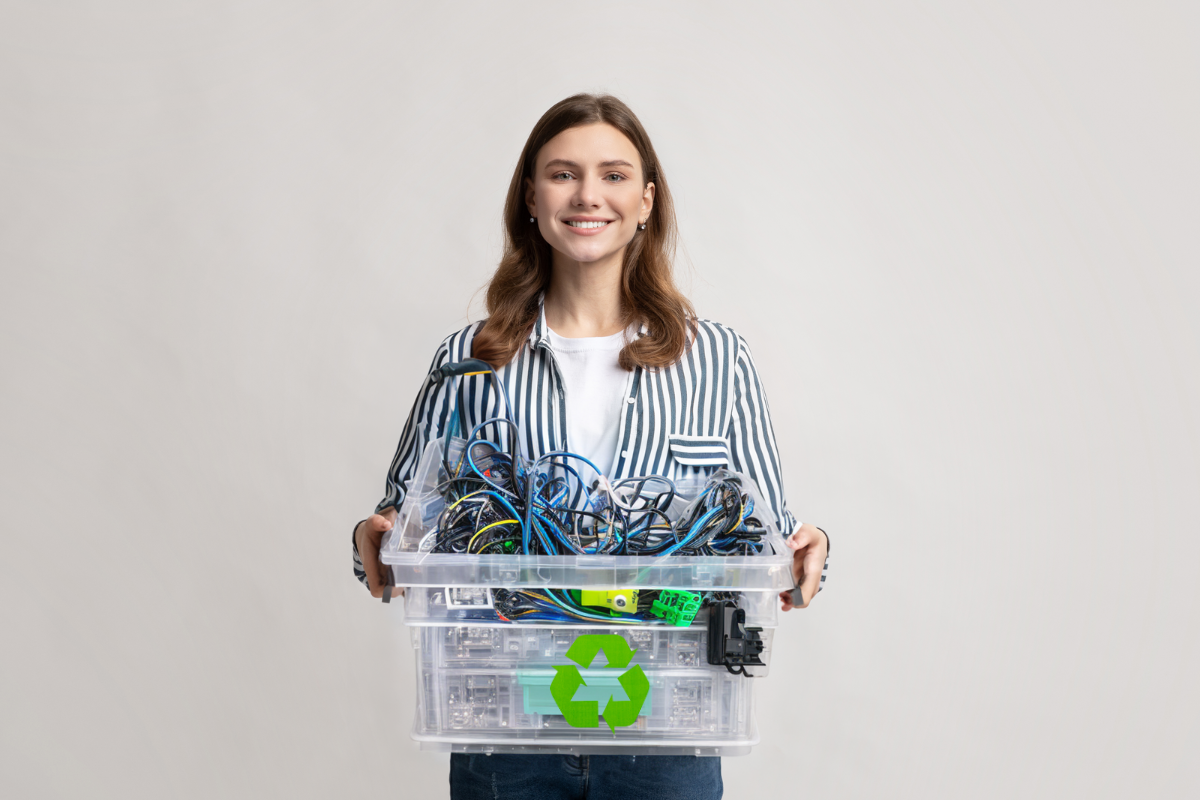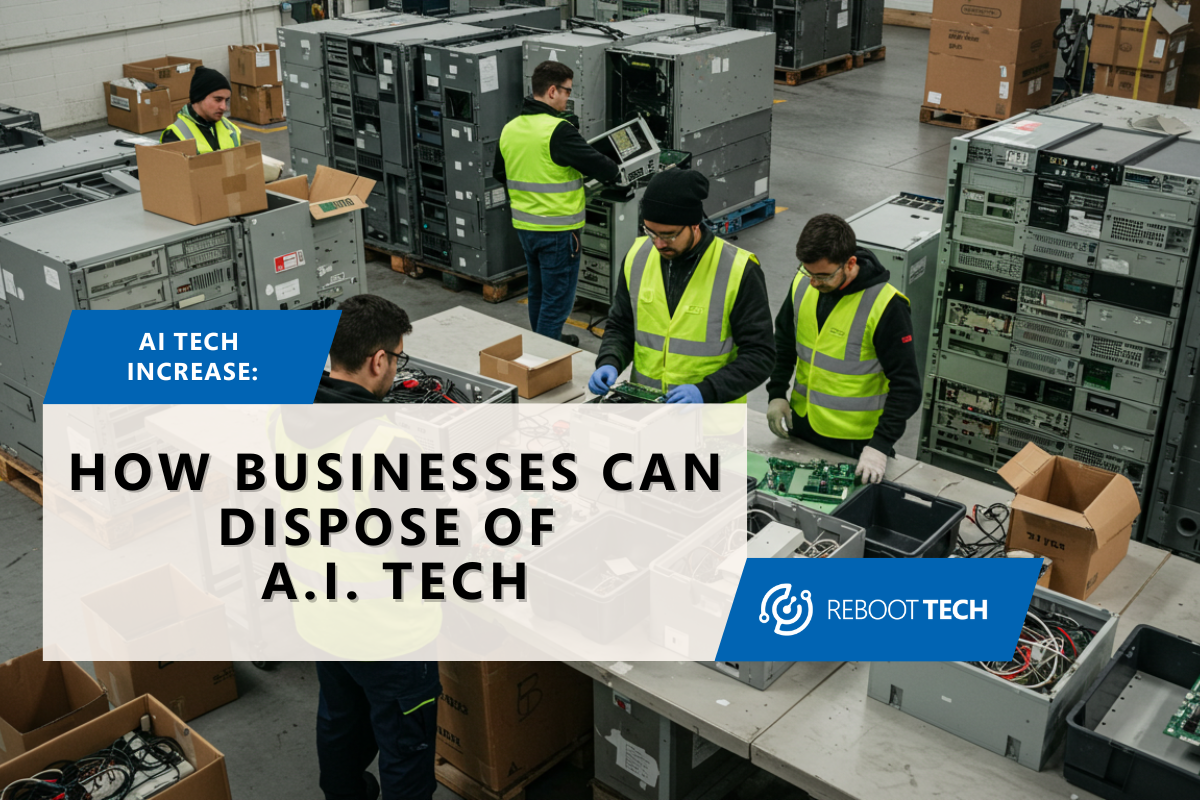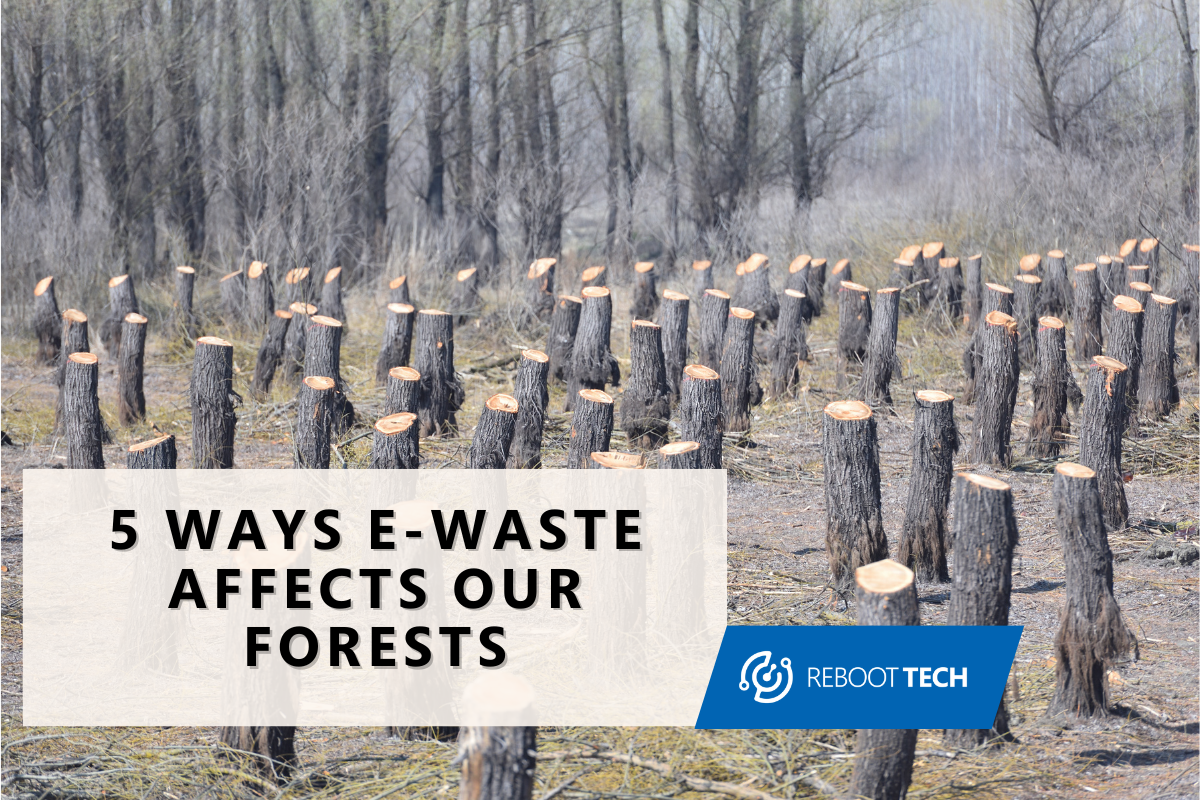
5 Ways E-Waste Affects Our Forest
Forests cover over 1/3 of the landmass of our planet and are an essential part of life on Earth. They also play a vital role in the oxygen cycle, taking in carbon dioxide and providing us with oxygen. Thanks to Forests, we have tools, homes, job opportunities, clean air, and much more. International Day of Forests, which takes place on Thursday, March 21st, 2024, was created to recognize the importance they play in our lives and protect them at all costs.
Because, unfortunately, our forests are suffering. Since 2010, the net loss in forests globally has been 4.8 million hectares per year. Besides losing them due to harvesting and creating new businesses, they are also being harmed by our waste streams, with one of the main ones being electronic waste (e-waste).
Why the International Day of Forests is Important
International Day of Forests serves as a reminder of the critical role forests play in sustaining life on Earth. Sometimes we can take our forests for granted, even though, without them, we would not have good livelihoods. It’s the little things as well that can severely impact our environment. Simple everyday things such as carbon emissions, not recycling, or consuming too much energy.
The value of this day is to serve as a friendly reminder and educate those around us on how to take better care of the environment. Because even though some tasks may seem small or insignificant, they add up and cause environmental degradation. This day aims to raise awareness about the value of forests and promote actions to protect, conserve, and sustainably manage these vital ecosystems.
How Forests Help the Environment and Human Health
Forests offer many benefits for the environment and health:
- Biodiversity: Hosts a wide variety of plants and animals, helping to preserve biodiversity.
- Climate Regulation: Helps control the Earth’s climate by taking in carbon dioxide and releasing oxygen during photosynthesis.
- Air and Water Cleaning: Clean the air by filtering and purifying water by trapping sediments and soaking up pollutants.
- Recreation and Mental Health: Provides places for leisure and relaxation, promoting mental well-being with their peaceful natural settings.
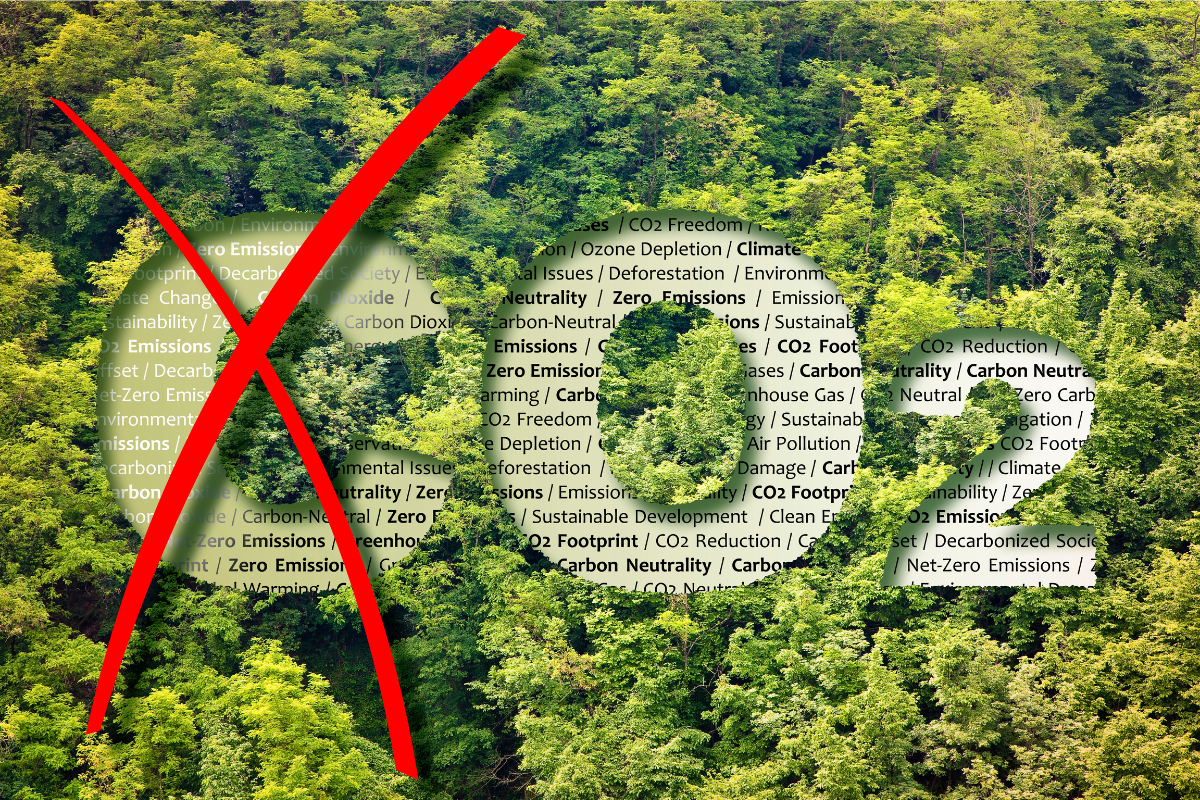
How E-Waste Affects Them
E-waste, or electronic waste, poses significant threats to forest ecosystems in various ways:
1. Deforestation
The mining of precious metals and minerals used in electronic devices often leads to deforestation. Trees are cleared to get these resources, hurting ecosystems and leading to loss of homes for countless plant and animal species.
Per year, deforestation causes around $2 trillion to $4.5 trillion in biodiversity losses each year. Here’s another shocking fact, between 1990 and 2020, the world lost 4.2% of its tree cover. By 2030, it is projected that only 10% of the world’s rainforests may remain.
Because, unfortunately, our forests are suffering. Since 2010, the net loss in forests globally has been 4.8 million hectares per year. Besides losing them due to harvesting and creating new businesses, they are also being harmed by our waste streams, with one of the main ones being electronic waste (e-waste).
2. Soil Contamination
Improper disposal of e-waste releases toxic chemicals and heavy metals into the soil. These pollutants can accumulate over time, contaminating the soil and affecting the growth of plants and trees.
There have been many studies showing heavy metal pollution of soil. This is from production, sales, repair, or improper disposal. According to the National Library of Medicine, the soil of an e-waste recycling site contained 957 mg/kg Sn, 2850 mg/kg Pb, 4.6 mg/kg, and many other harmful chemicals in Bangalore. This is just one place out of many, other areas such as Africa have very high reports of e-waste chemicals in their soil due to improper recycling.
3. Water Pollution
E-waste can contaminate water sources in and around forests. When electronic devices are disposed of improperly, toxic substances such as lead, mercury, and cadmium can leach into nearby water bodies such as rivers, lakes, ponds, or other streams This endangers aquatic life and compromises water quality.
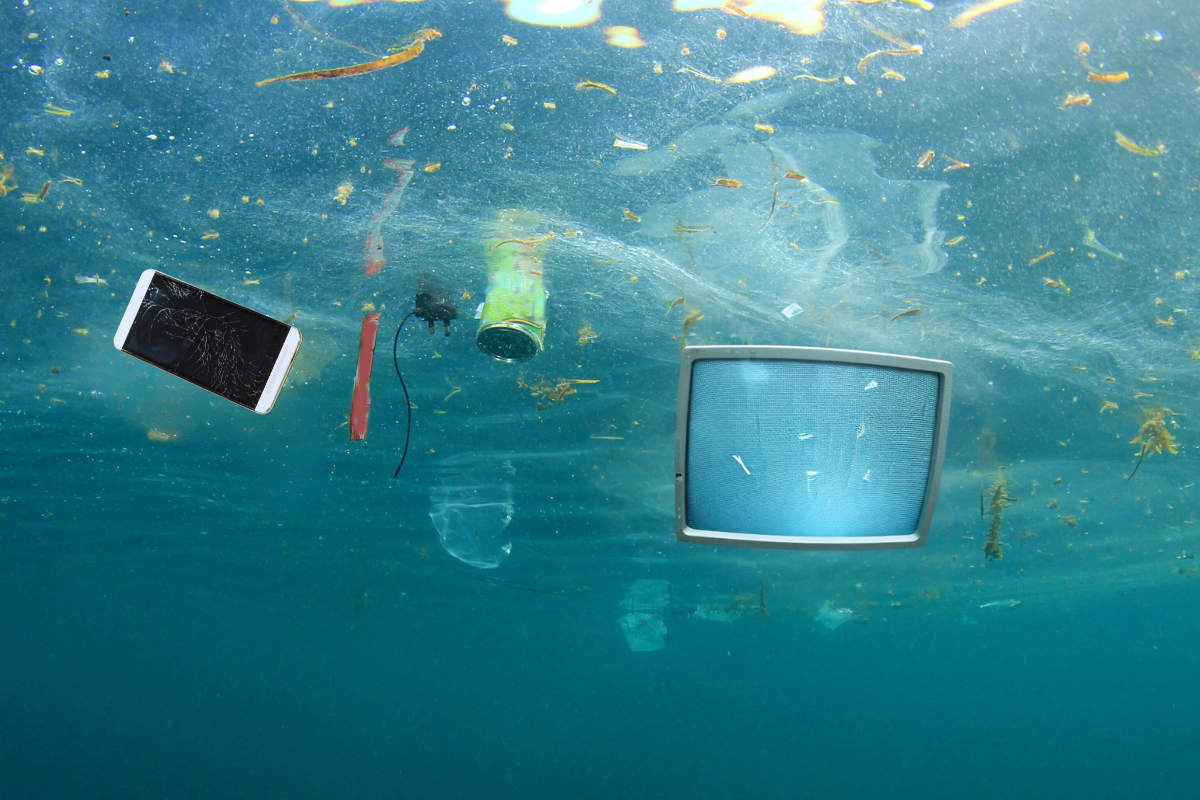
Through those streams, acidification and toxification are created in water. This makes it unsafe for animals, plants, or humans in nearby places of a recycling site. This can kill aquatic organisms, and make clean drinking water a hassle to find. If humans drink this, it can cause many health issues to their brain, heart, liver, or kidneys, and even cause birth defects for their babies.
4. Habitat Destruction
E-waste dumping sites and unregulated electronics recycling practices create a threat to these habitats. As electronic waste accumulates, it disrupts natural ecosystems and threatens the survival of indigenous flora and fauna.
As mentioned before, if e-waste can leak into the soil or water, it can easily disrupt the ecosystem of aquatic life. Animals that depend on forests would be indirectly affected because, to create our electronics, forests are destroyed.
5. Forest Fires
Certain components of electronic devices, such as lithium-ion batteries, can pose a fire hazard to trees. 2023 was a record year for reported fires at waste and recycling facilities. This can happen if people don’t take proper precautions when handling electronics.
A lot of these are due to Lithium-ion batteries, which can explode or catch fire if they are exposed to bad conditions. Improperly disposed of e-waste increases the risk of forest fires, which can have devastating effects on its ecosystems, including loss of habitat and destruction of wildlife.
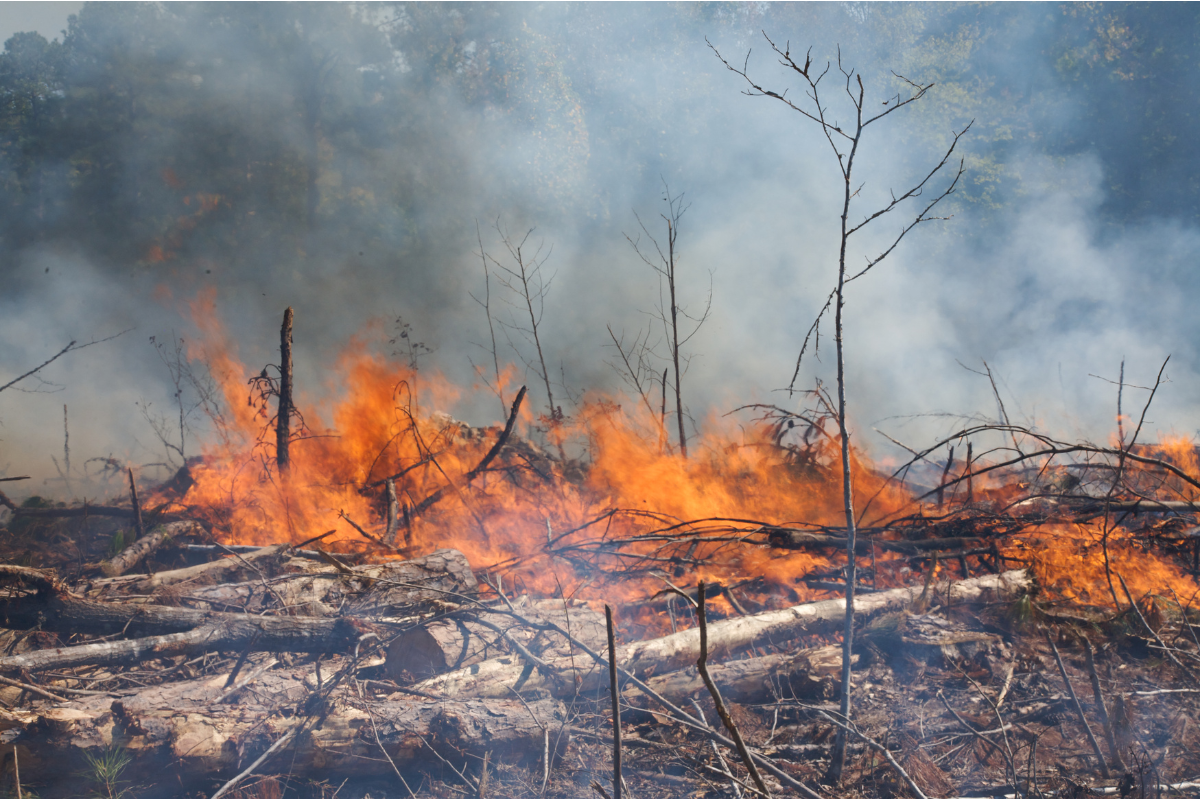
Ways to Protect Our Environment from E-Waste
To protect forests from e-waste harm, it’s important to:
- Encourage Responsible Buying: Promote eco-friendly production and buying habits to cut down on e-waste.
- Ensure Proper Recycling: Set and enforce rules for safe recycling and disposal to prevent pollution.
- Spread Awareness: Teach people about e-waste’s environmental impact and why recycling electronics matters.
- Back Green Technology: Invest in eco-friendly tech and materials to reduce electronic devices’ environmental impact.
- Work Together: Collaborate with governments, businesses, and communities to create effective e-waste management strategies and protect forests.
